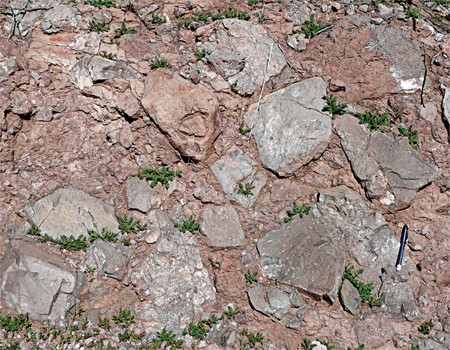The type of rock shown in this photograph is
A. breccia.
B. conglomerate.
C. sandstone.
D. shale.
Answer: A
You might also like to view...
The theory of plate tectonics states that
A. buoyant lithospheric plates float on top of the rigid asthenosphere. B. the lithosphere is broken up into several plates that move about as a result of convective motion in the asthenosphere. C. earthquakes and volcanic activity result from convection motion in the lithosphere. D. the plates move in conveyor-belt fashion as new crust is generated at the continental margins and destroyed at the midocean ridges.
What is the relationship between two species in which one species benefit from the interaction whereas the other species neither benefits
A. Mutualism B. Commensalism C. Parasitism D. Advantagism
What is the major underlying assumption of the core-periphery model?
A) that the wealth of the developed core will eventually diffuse to the less developed periphery B) that the different levels of development between the core and the periphery are caused by the relative levels of natural resources in each area C) that the less developed periphery will eventually revolt against the wealthier core D) that the developed core achieved its wealth primarily by taking advantage of the southern periphery, through either colonialism or imperialism E) that the core and periphery will work together to eliminate uneven development
Relative to latitude and surface energy receipts, which of the following is true?
A) Insolation intensity decreases with distance from the subsolar point. B) Seasonal effects increase toward the equator. C) Day length decreases with increasing latitude in summer. D) The greatest seasonal variability occurs at exceptionally high latitudes. E) Insolation intensity increases with distance from the subsolar point.